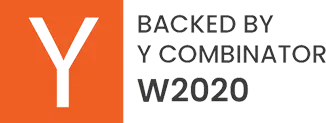Updated on: November 20, 2025
In 2026, e-commerce businesses will make a difference by offering precision. Delivery windows are getting tighter because customers want everything delivered to their doorsteps superfast. The list mile delivery cost in a high-competition market is becoming a must-have.
As we move forward, the delivery windows will again be getting shorter. At the same time, expect the inventory cost to rise. Not to mention that customers expect every order to arrive exactly when promised and at the least possible cost.
That’s why if you’re planning to start an e-commerce distribution business in 2026, the future looks bright. But what you need is a structure and the scope to scale smart — quickly, accurately, and profitably.
The challenge is doing all this without burning through margins.
Success in 2026 will rely on more brilliant execution, where you’ll see yourself balancing warehouse location, demand forecasting, and delivery routing under one system.
Let’s find out how to start and scale with the e-commerce distribution.
How to Start and Scale Your E-commerce Distribution in 2026
Most e-commerce operators think scale starts with a bigger warehouse. It doesn’t. It starts with speed, with more emphasis on how fast your inventory moves in and out without breaking your workflow.

Source E-commerce distribution centers
For distribution businesses serving e-commerce brands, growth in 2026 will come from the accuracy of delivery and maintaining timeliness. Every step, from where you place stock to how your trucks leave the dock, has to run in sync.
The steps below define how to set up and scale an e-commerce distribution business the right way.
-
Defining the New E-commerce Distribution Model
The growth of a distribution network lives or dies on drive time from dock to doorstep. Start by mapping 12 months of order origins by ZIP and identifying the tightest clusters. Plant small regional sites near those centroids, aiming to deliver within a 30- to 60-mile service radius.
Also, balance rent against labor and carrier access costs. Cheap space far from demand bleeds fuel and time. Whereas, good sites sit near parcel hubs, truck-legal routes, and neighbourhoods where your clients actually ship.
Eventually, the distribution models will be designed for flow and not just for storage. This is to shorten the path between receiving and picking, keeping cross-dock lanes open, and aiming to sort each load within half an hour.
Some of the core tasks to manage include:
- Ranking metros by order density and SLA targets
- Scoring candidate sites on 10 metrics: radius, rent, labor pool, curb cuts, trailer access, carrier proximity, utilities, flood risk, taxes, and expansion options
- Piloting one micro-warehouse before copying the blueprint to the next city
-
Run inventory and demand like a system
A strong distribution setup runs on predictability. The goal is simple: get the right stock to the right place before the order even comes in. Start by forecasting demand by product and by zone, not across the entire network.
increase fuel savings
Save 2 Hours on Deliveries, Everyday!
Optimize routes with our algorithm, reducing travel time and costs efficiently.
Get Started for FreeGroup items by how fast they move — your A, B, and C movers. Keep the fast-moving ones stocked in every active warehouse, while the slower ones stay in regional hubs where demand is steady.
Set reorder levels for each location based on how fast items sell and how long replenishment takes. Review them weekly so you never run out or overstock. Define clear cut-off times for same-day orders. If it takes two hours to pick and load, don’t accept orders that fall outside that window.The focus areas in this step are:
- Build SKU-by-zone forecasts with seasonality and promo flags
- Define node-level min/max and safety stock for A/B/C classes
- Publish hard order cut-offs per node and hold to them
- Review SLA misses weekly and adjust forecasts, not just staffing
-
Route Planning and Dispatch Management
Once your stock is positioned right, the next challenge is dispatch. Routes must move fast, stay accurate, and keep drivers on predictable schedules. Without structure, even a strong warehouse operation may struggle to grow.
Good dispatching comes from data around visibility across drivers, vehicles, and zones. Ideally, you’d want them in your single dashboard. When new orders come in or cancellations disrupt the queue, the system should recalculate and assign instantly. That’s how fleets stay profitable instead of reactive.
That’s where tools like Zeo Route Planner transform daily operations. Zeo automates route optimization, tracks ETAs in real time, and updates dispatchers instantly when anything changes.
Zeo Route Planner Route Planning
As you expand to multiple hubs, the same system scales with your fleet — assigning the right driver, minimizing empty miles, and keeping deliveries on time without chaos.
Using Zeo Route Planner for route planning of your e-commerce provides:
- Dynamic route optimization for e-commerce that automatically updates routes when new stops or cancellations appear
- Auto-assign dispatch, which can assign deliveries to the most suitable drivers based on distance, workload, and time window
- Real-time ETAs that keep both dispatchers and customers informed on delivery progress.
- A driver app that helps them with navigation, stop notes, and proof-of-delivery tools in one place.
- The much-needed scalability as your fleet expands. Because Zeo keeps the same routing precision across more hubs, more vehicles, and tighter schedules.
Conclusion
E-commerce distribution will play a huge role for businesses trying to grow amidst the high competition. The need for shorter windows, faster turnarounds, and smaller margins will require you to establish a system that’s more predictable and more in your control.
You don’t need a bigger team to achieve that; you need better coordination between what’s stored, what’s shipped, and what’s still moving.
This is why you can benefit from platforms like Zeo Route Planner, which make scaling practical. The more hubs and fleets you add, the harder it gets to keep routes, ETAs, and proof of delivery aligned. But Zeo brings it all into one view. You plan faster, dispatch smarter, and respond in seconds when things shift.

Are you a fleet owner?
Want to manage your drivers and deliveries easily?
Grow your business effortlessly with Zeo Routes Planner – optimize routes and manage multiple drivers with ease.

increase fuel savings
Save $200 on fuel, Monthly!
Optimize routes with our algorithm, reducing travel time and costs efficiently.
Get Started for Free






















